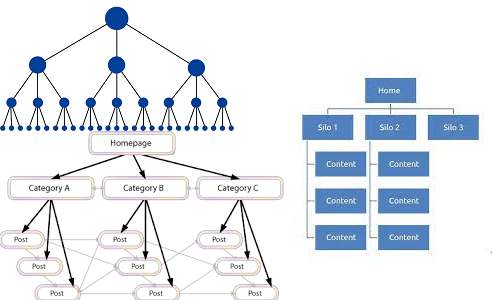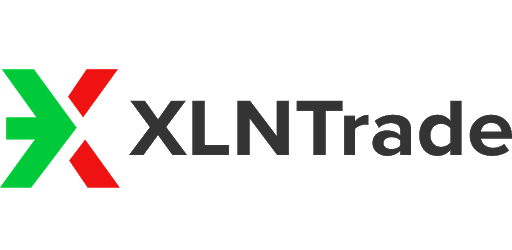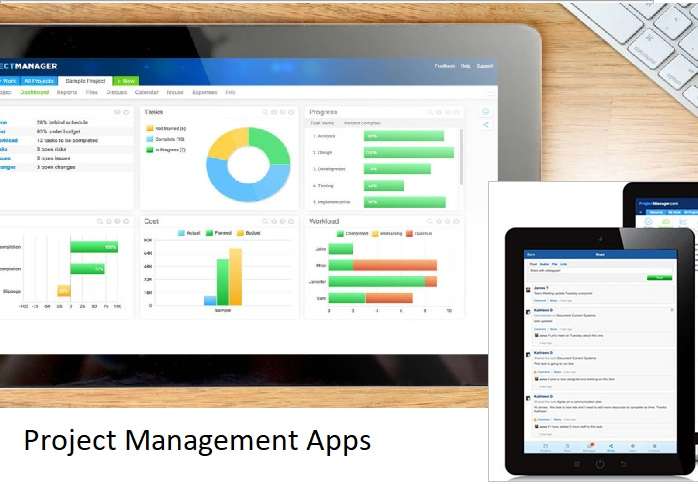Internal linking is a strategy of building links between two contents of the same domain. It is important for backlinks, which are links from other web pages. Internal links are very important, as they transfer authority and context to users and to the Google search engine.
That is to say. If I am on the about us page, for example, and this URL has an authority of 10, and I include 5 links in the content, we will be distributing 2 points to each internal link. For this reason, it is very important to control the number of internal links that we have in each URL. Ensure that these have a thematic relationship and that they are the ones that you are most interested in positioning.
Next, we will give some tips to consider on this whole subject. Many SEOs often work on-page SEO in basic aspects of a website and add external links. But they are not careful with the internal linking of the website.
This is something that will allow us to influence Google on which content is more important among hundreds or thousands of URLs. And therefore will reinforce that desired positioning.
Steps to fix the internal linking of a website
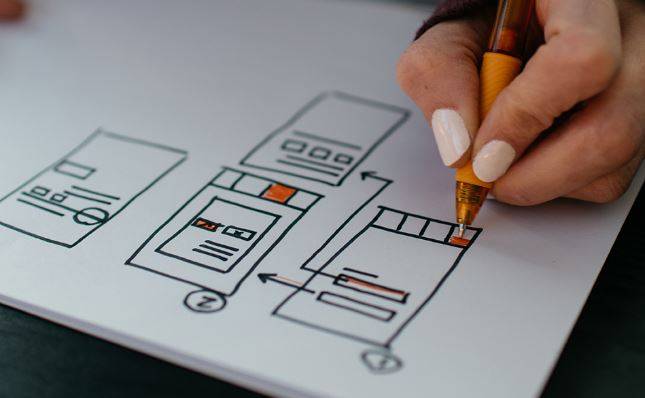
1. Define good and bad URLs.
The first thing we must define is this point. Among all the URLs on our website, which ones are we interested in being indexed? which we will call good URLs? In a second block, we will place the URLs that we do not intend to index (default URLs). This may vary by project.
It is possible that in almost all projects you do not want to index URLs with paginations, filters, or the legal page. Instead, there are times when you’ll want to index author URLs or tags, and other times you won’t. In any case, identifying these two groups (indexable and non-indexable) will be a fundamental exercise.
Once we have these two lists prepared, we must ensure the following ASAP. All good URLs should have at least one internal link. And the non-indexable URLs, the fewer they have, the better.
2. Identify good URLs that have authority issues.
Next, we must identify those URLs that are good for us, but Google does not consider them that way. It is possible that in the most extreme cases we will identify them because they are not indexed. But even if they are indexed they may have 0 incoming links and 0 traffic. Which ends up being basically the same as not being indexed.
What can be the reason for having a URL with authority problems? Usually, it is because they will be orphaned. That is, they do not have any internal or external link pointing to them. There is no doubt that the first thing you should check is that they are in the Sitemap, but that may not be enough. These links must be in the code, and if possible in the body of the contents of our site with a direct thematic relationship.
How do we detect orphan URLs?
There are many SEO software (including Search console) that with a simple crawl can offer us a list of orphaned URLs. Whatever you use, you must configure it correctly because with a normal crawl of the entire web you may not detect it.
You must cross crawl with a well-configured Sitemap or log record so that the google crawling spider identifies the good URLs and their relationships between them.
Another common reason that we can find would be to have good URLs that are not indexed because they have a non-index tag. This is surely due to an error since a good URL should never have a no index, it is a contradiction. Either you remove the no index, or you pass it to the list of bad URLs if it should be considered that way.
3. Prioritize the URLs that we are most interested in positioning
Within the URLs defined as good, we must make levels according to our business interest and positioning, which normally go hand in hand. While all good URLs should have at least 1 link, priority URLs should have multiple.
These links will be even more powerful if the source URL is authoritative and thematically related.
Hint: strategically important URLs should be linked from prominent pages like the homepage, menu, or footer. Hint 2: if they are really important, just the footer alone will not be enough.
4. Define Main Menu Links
In any aspect of internal linking, the priority should always be usability. That is to say: think about each space on the web, and what links will be useful to the user to click on them.
Normally they will be linked with a thematic and/or hierarchical relationship. In its application to the menu, we are often asked what links we should insert in this section, and the answer is good SEOs.
There is no single formula to define the menu link, as it will depend on the sector, website, target user, etc. You must bear in mind that any link you put in the main menu will be one of the URLs with the most internal links and the highest transferred authority, since that page can be accessed from anywhere on the web, through the menu. A link in the menu (or in the footer) is not a single link, but each new URL generated on that site will be a new internal link to that URL from the menu.
A common problem is linking everything from the main menu.
A very natural but often wrong decision. We must talk to the client so that, in case of having a lot of content, we know how to differentiate the fundamental content from the accessory.
You must think that a link in the menu applies to all the URLs of the site, and therefore grants and dilutes authority. You must imagine the menu as a good distributor for the user, as pure navigation, and at the same time as an authority distributor for Google.
Then all those URLs that we have defined as a priority at the SEO level should be linked from the menu. If at a hierarchical and semantic level it suits us to put them in the menu, great, while in cases where it is not possible, as you have seen on many websites, they can be linked from the footer because they are also links site-wide although of less hierarchy and value.
And what about the classic sitemaps; a link farm! On some occasions, it is possible that for usability an element that is 0 priority or bad at the SEO level (for example corporate pages) should be in the menu, and there we enter the options to obfuscate unwanted links.
5. Define links from home
We must understand that internal links must be proportional to the size of the web. And understand the function of the home page: it is usually the most visited page by crawlers and users.
Therefore, everything we put in will have a high probability of receiving a click and being tracked by Google in less than 24 hours. Consequently, it will be important and we will be able to position it better (excluding sitewide links) in the menu and footer).
It is therefore not a coincidence that many e-commerce has their news on the home page, that many blogs present their latest posts on the home page, nor even that certain media charge an extra to appear on the cover. Appearing on the home page is synonymous with being tracked, and probably indexed and ranked.
So what links should I put in the body of the home page? Many? The number of links should not be excessive, and always be proportional to the size of our site.
Note:
The more links you put on a page, the less authority we are going to distribute. And the higher up that link is, the more authority we’re transferring. In the end, a home page will be like the entrance to a business, in which we will have a showcase (initial slides or banners), main aisles (categories, brands…), and expanded information (products, posts…).
The most common is that we use the links on the main page to link to our main categories of content and/or brands, as these in turn will link to their products and thus make that content available at a shallow depth.
Aspects to take into account in interlinking
How to tag links and their replies
In an ideal world, all internal links on our website should give a response of 200 and an index tag (we want to index it). We should avoid internal links that give a 3XX (redirect) or 4XX/5XX (error) response, of course, but it is also clear that you are not interested in having internal links to a non-index, we are throwing authority out the window.
How to deal with URLs that I don’t want to be indexed?
Previously we have defined as bad URLs those that we do not want to index. If we act accordingly, it seems logical that a URL that I do not want to index will not get 300 internal links. Ideally, you should have none, but that won’t always be possible.
One option would be to do internal nofollow to do link sculpting. That is, put a nofollow attribute on those bad internal links. This is a practice that is not recommended, as it can lead to tracking problems that affect good URLs. If a link does not make sense and we are not interested, we do not put it, period, we do not put it with nofollow.
A second option for those links to bad URLs would be to obfuscate or encrypt links, but this is technically tricky and can lead to a penalty if implemented poorly. It is understood by obfuscating links that Google does not interpret that there is a link or path.
It can be implemented with Javascript with a class that identifies class and encrypts, among other options. This is something that should not be done unless you have a lot of experience in this type of practice.
How to work linking on a website with filters
On many websites, we can find a list in which filters appear to refine the results. This functionality, very useful for the user, can be a headache at the SEO level. You should think that normally each filter option is a link and that they can also generate hundreds of combinations of URLs with little SEO value.
Here as SEOs we must define if we are going to be interested in those filter links for SEO, and what type of combinations we are going to need and want to index, and act accordingly. A technically viable option is to set the filters to be non-links, or to obfuscate them.
If we do that, we avoid diluting the SEO authority of the listings, but we must bear in mind that we will not be able to use the filters to position ourselves, and we will lose many long tail searches along the way.
The relationship between internal and external links
We initially said that through an internal link authority is transferred from one URL to another of our property. But the external authority determines what you are going to dole out internally. Think that Google needs a path, and signs, to get to a URL.
If we don’t have a crawl budget and authority, an internal link will have no effect. It may not be enough to have a URL in your sitemap and submit it to Google using the Google Search Console. In a domain without external links, internal linking is not worth working on.
Therefore, you must first work to obtain external links, of the highest quality and thematic relationship possible. For this reason, changes in internal linking have much more impact on a website that has a lot of domain authority, since there is a lot of authority to distribute among our URLs. Definitely,
The thematic relationship in interlinking
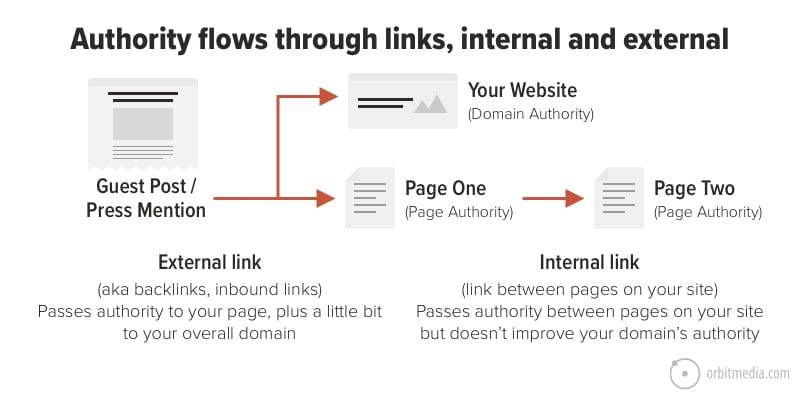
When something links to something, it transfers authority but also relationship, and context (anchor text). Google understands the link and places it semantically. For this reason, a URL needs links from pages with the same semantics, not from any page. Whether it’s an external or internal link, it doesn’t matter.
And it is highly recommended that this link have an anchor text that is contextual to what we are going to link to. Hint: the links that say see more, click here, or download, would not be an example of contextual anchor text.
And something to keep in mind for those of you who are worried about exposing yourself to possible penalties for extreme optimizations: an abuse of certain anchor text in external links can penalize us, of course.
But that rule doesn’t apply to inner linking, so You can force as much as you want to reinforce that whenever such a page is linked internally, it is done with a certain anchor text. At the same time, we can play with our anchor texts to position a single URL with several different keywords that can be synonymous, or more of a long tail nuance. It is advisable to always work with good keyword tools.
Automation and artificial intelligence in internal linking
As far as possible, the ideal would be to automate part of the internal linking, or at least perform massive actions per database. On a small website, you can work the internal linking manually and in fact, it will be the most recommended.
But if it is a large website, with hundreds or thousands of URLs, here it will be ideal for you to manually work on aspects such as the home page, the menu, and the footer, but for the intermediate ones (product sheets, listings, etc), where it will be Better that some patterns be marked, but from there, links are generated automatically but that these have a semantic relationship.
Fix excessive links in listings
We are already entering a very high level, and it is possible that you have never reached this far. We continue, and you accompany us wherever you want. Well: let’s imagine a list, with a category of posts or products.
In this listing, we have 10 items. Logic tells us that we should have 10 links, right? Well, on most websites we have 30 or 40 because for each element there is more than one link. And it is not desirable that in a list of posts or products, we have more than one link to a single file (normally there is a link in elements such as the image, the title, and the purchase button, see more…).
The ideal, perfect, and wonderful thing are that there is only one link, which is semantic and in the right place. But at the same time, we must think about the user, who would be pissed (and rightly so), if there is only a link in the name of the product, but you cannot access the content by clicking on the photo, for example.
A possible solution would be to insert a single link that goes from the image to the name, which are the usual click places for users.
Pagination as an internal linking problem
We should move towards an infinite scroll, it’s about time. On all websites with listings. Google has already said two years ago that the pages are obsolete and those tags that we used rel prev and others are no longer valid, therefore if we have them it is likely that Google will not process them as such. That can cause us problems.
Following what we have been explaining throughout the post, think that with each pagination link we are passing authority to a URL that is useless. Then the strength of that listing will be diluted, and it will also do so to pages with duplicate and low-value content. Important: before moving on to remove the pagination, we must ensure that all posts or products have internal links that are not paginations,
Internal linking in a blog
In blogs, a usual cloud of links between content is generated, with manual or automatic links to other posts, categories, authors, or tags. It is important to control and define this intertwining so that authority is not diluted excessively, and we are able to build content clusters from thematic relationships.
A very interesting aspect that you should consider is the following. The related sidebars should be conditional, that is, different depending on where I am. If I’m in a post in the ice cream category, link me to posts that also talk about ice cream; not candy.
The most common thing is that these blocks include links to the latest or most read of the blog as a whole. Which is very good, but it will be more interesting than links to tags, categories, and posts with a thematic relationship.
And it is logical because, from the user’s perspective, we will have more chances that when a post ends, they will read another related one. An already excellent combination would be that we relate to the latest posts and the most read of that same category.
Internal linking in e-commerce with a blog
A common debate in many e-commerce projects is deciding what to do with the blog. Often e-commerce developed with certain CMS or with custom development, will not incorporate an optimal blog at the SEO level. And in this situation, in many cases, it is decided to set up a separate WordPress blog. Which we fit as best we can in the online store and internal linking.
That is something that if technically possible, better avoid. Both Google and the user will appreciate not having to make strange trips between your website and your blog. Better that it flows within the same ecosystem, navigation, design, and menu.
Thinking about usability. It is not good that you are on a website and when you click, you go to something much different. Even users can be lost in movements from e-commerce to blog or vice versa. And at the internal linking level, Well, it’s brutal for your e-commerce.
From a blog post, the user will always have the menu and footer of my main categories and brands, and their links, available. To work both in an intertwined blog-online store also within the blog, here the ideal would be to combine the store menu with a second menu and blog links.
